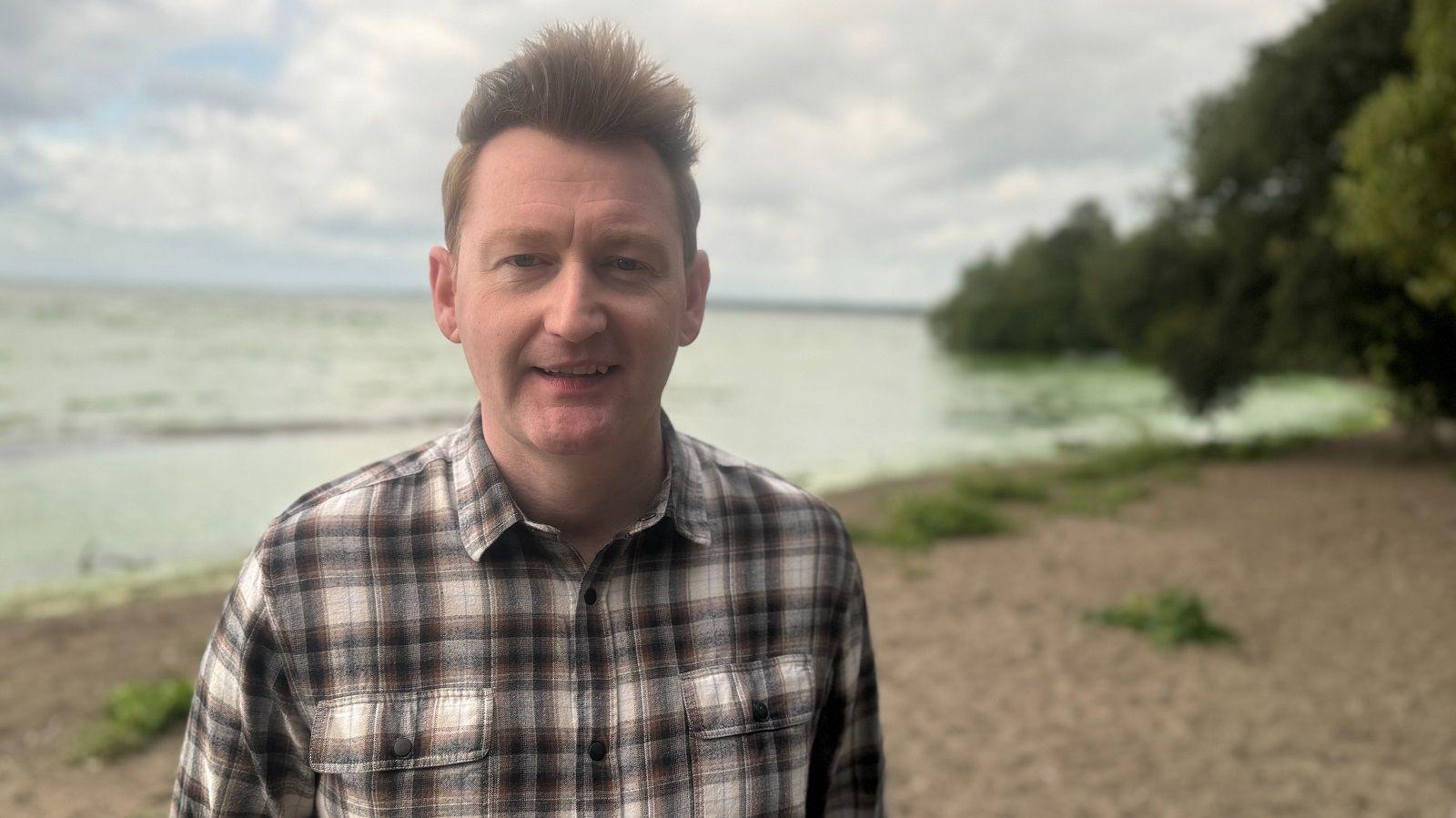Little known about algae wildlife impact - scientist
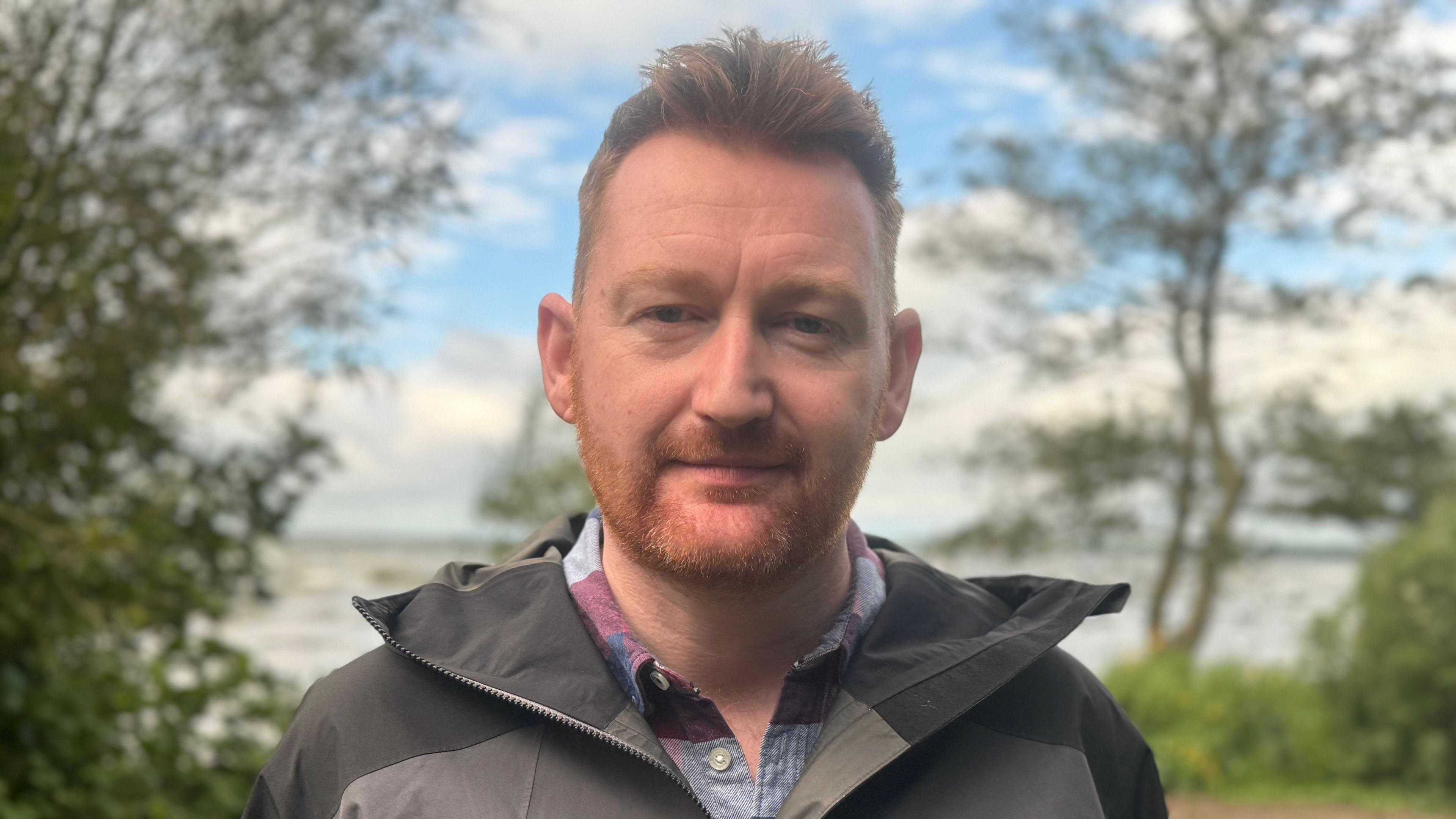
Dr Neil Reid from Queen's University is wary of claims the algae has killed wildlife
- Published
When the largest lake in the UK turns green, it's hard not to wonder about the effect on local wildlife.
Blue-green algae is known to emit toxins which can cause skin irritation in humans, or stomach upsets if a lot of affected water is ingested while swimming, for example.
And it is known to be potentially fatal for dogs.
But "surprisingly," says one scientist who's been studying the algae, very little is known about the effect of algae on wildlife.
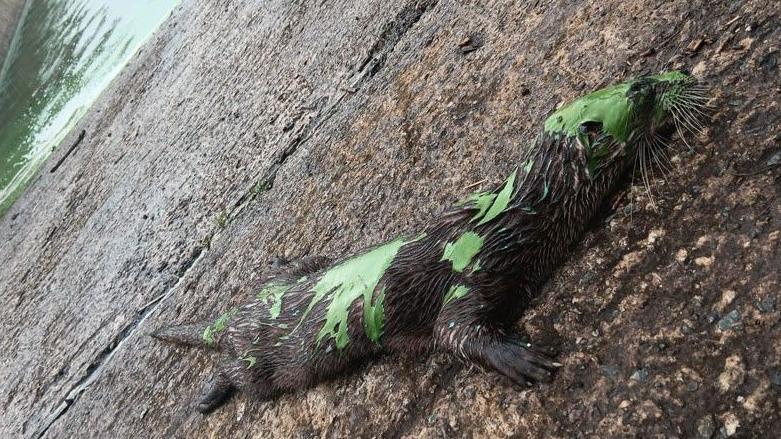
An otter was discovered washed up on the slipway at Newferry in Portglenone
Earlier in the summer, an otter was pictured washed up on the slipway at Newferry in Portglenone.
The animal was coated in a green algae-type substance, but it's not known if that contributed to its death.
The Department of Agriculture, Environment and Rural Affairs said officials attempted to retrieve the animal after being notified by Mid and East Antrim Council, but it had gone from the area when they arrived.
A spokesperson confirmed they have received no further reports.
Dr Neil Reid from Queen's University Belfast is wary of claims that the algae has killed birds, otters and other wildlife.
"We have to be quite cautious because they could have died for other reasons and ended up in the algae."
What is blue-green algae?
Dr Reid said none of the animals that were reported to have died as a result of the algae have undergone formal testing for the toxins or a post-mortem.
"With respect to things like wildfowl, swans, these could have died for other reasons, such as bird flu," he said.
"And other animals may have died just of natural causes."
Blue-green algae isn't algae; it's bacteria—cyanobacteria—of which there are many kinds.
The form in Lough Neagh is microcystis aeruginosa, which can emit toxins.
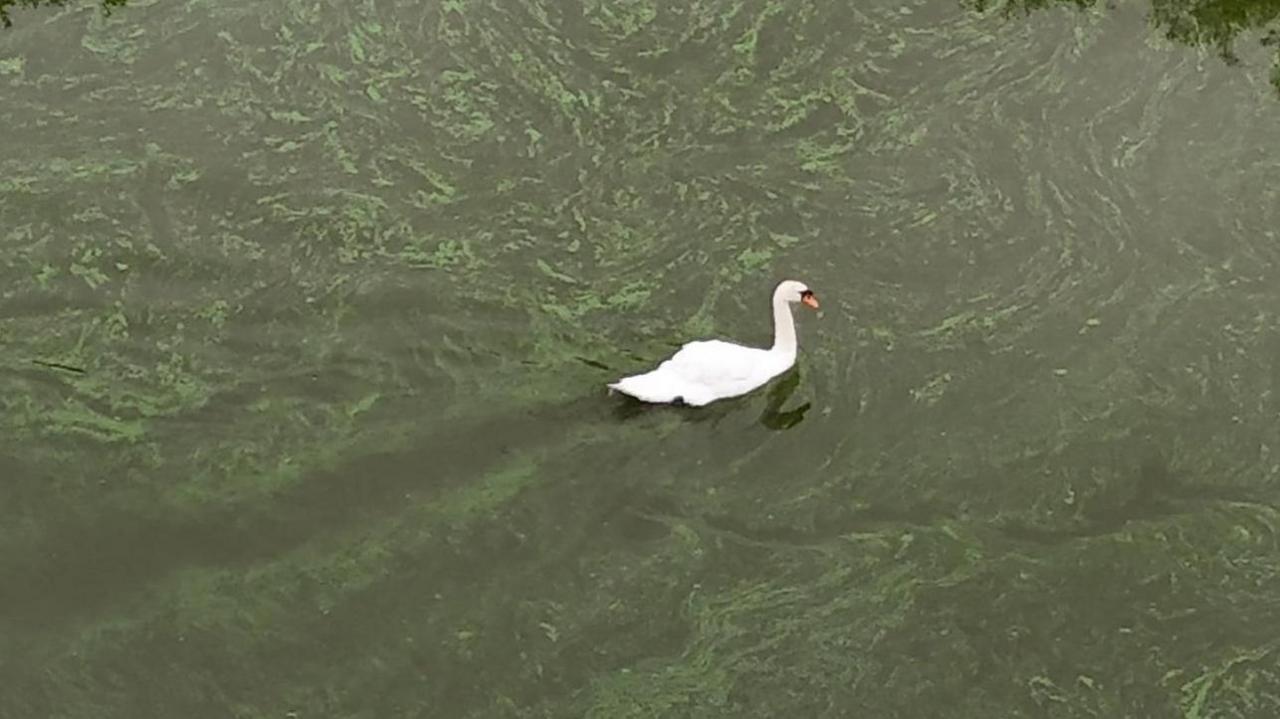
Dr Reid says in relation to the deaths of wildfowl could have other explanations such as bird flu
What are the effects of blue-green algae?
Dr Reid's research identified toxins in the water that could pose environmental and public health risks.
The toxins secreted by the algae mean it isn't a natural food source for wildlife.
In fact, just one kind of snail - the ramshorn snail - is known to deliberately eat blue-green algae and it is a priority species requiring conservation action, meaning they are not common.
The algae's "protective mechanism" of secreting toxins also plays a role in the formation of the blooms.
"We have invasive zebra mussels in the lough," said Dr Reid.
"They work by filter-feeding out lots of green algae, which are non-toxic, and what they do is essentially spit out or excrete blue-green algae back into the water because of the toxins.
"So what you're left with is just a huge abundance of blue-green algae."
That is what's affecting wildlife in the lough.
The year the UK's largest lake turned green
- Published2 January 2024
What is blue-green algae and why is it a problem?
- Published5 August 2024
The larvae of the Lough Neagh midge need non-toxic algae to sink through the water and reach them in the sediment to feed on.
The adult midges emerge from the water in spring to form large swarms that are a food source for the Lough Neagh eel, among other wildlife.
But communities around the lough say the swarms have all but vanished in recent years, although some clouds of flies were seen this year.
"There's been a big change to the food chain in the lough," said David Jewson, a former scientist at Ulster University.
"Really, what needs to be done now, as well as controlling the nutrients coming into the Lough, we need to be looking at the food chain and how that's changed."

Dr Harry Teagle from the Agri-Food and Biosciences Institute
Research studies in the United States have looked at how the algae affects fly larvae in the water.
Aquatic ecologist Dr Harry Teagle has been studying the lough as part of his work with the Agri-Food and Biosciences Institute (AFBI) and said the findings were not easily applied to Lough Neagh.
"Those seemed to show that the toxins that the blue-green algae can produce do stress the larvae in some ways.
"But they're usually in very controlled conditions and using one strain and one species of chironomid larvae."
Mr Teagle said putting the results into the context of a large water body as "complicated and complex" as Lough Neagh is very difficult.
There are also questions about how the water quality affects the fly populations.
Larvae may thrive in poorer water conditions as they develop in the sediment.
'30 years to fix problem'
The environment minister Andrew Muir said his department was doing "a lot of scientific research in terms of the scale of the situation we have and also the impact of the actions we are looking to take".
Speaking to BBC News NI's The View programme, he added: “This is a problem that is decades in the making and will be decades in the fixing. The scenes we have seen this year and last year are likely occur for many more years to come."
The environment minister also said it "could be 30 years" before the problems in Lough Neagh were fixed.
Lough Neagh undergoing rapid change
Mr Teagle said data showed a peak in larval densities in the 90s when water quality was "particularly poor".
He said there was "a lot of very high nutrient load" in the lough back then but the fall in recent years is likely linked to "improvement in water quality".
Mr Teagle said densities seen now are "characteristic of an enriched lake" similar to what was seen in the 50s and 60s.
It's more complicated when it comes to adult fly swarms - there simply is not the information to decide.
"Without the data, it's very difficult to make any kind of conclusion about whether the swarms we're seeing today are less than they were," Mr Teagle said.
"Lough Neagh is undergoing such a rapid period of change at the moment, because of climate change, because of the invasive zebra mussels, that determining what will happen in the future is more difficult than ever."
Mr Teagle said it's more important now than ever to "take measures to manage the system sustainably and effectively in future".
"In a system as big and as complicated...as close to people's hearts as Lough Neagh, there's never a simple answer."
- Published5 August 2024
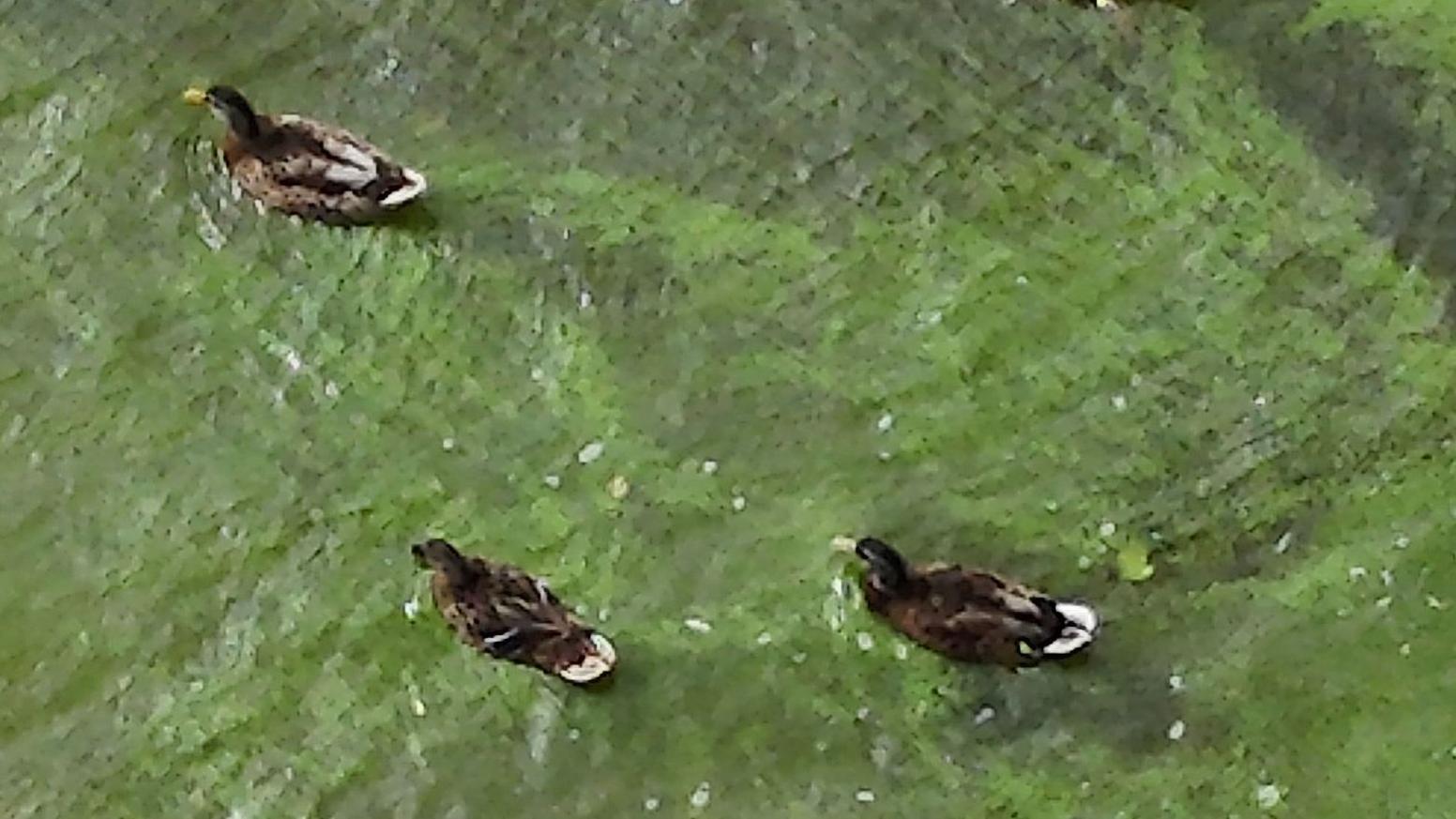
- Published6 August 2024
